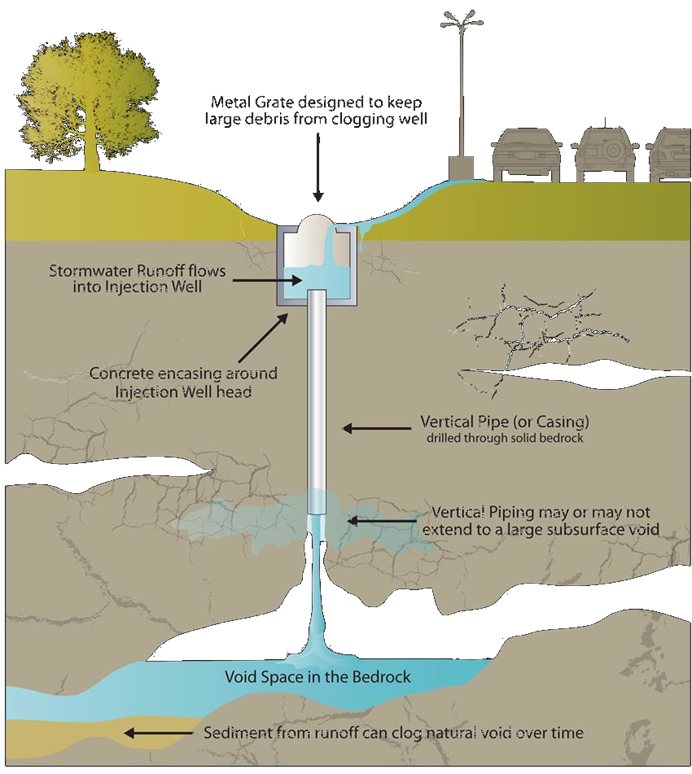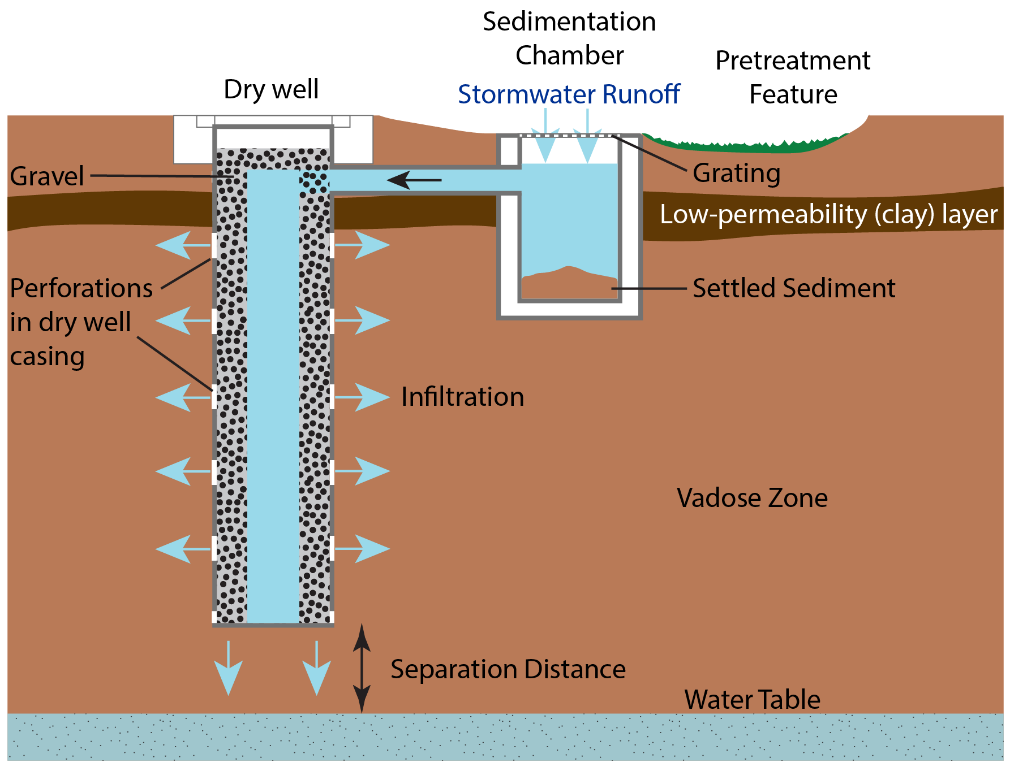Stormwater Drainage Wells
Background
RPCO possesses training, staffing and coordination abilities to handle specialized projects such as those proposing Stormwater Drainage Wells (AKA Class V Injection Wells) for new land development and to comply with stormwater management requirements.

Credit: Jonathan Oglesby, M.S., Ogden College & Dept. of Earth, Environmental, and Atmospheric Sciences
The U.S. Environmental Protection Agency (EPA) defines an injection well as "a bored, drilled, or driven shaft, or a dug hole that is deeper than it is wide, or an improved sinkhole, or a subsurface fluid distribution system." There are a total of 6 classes of injection wells, each regulated by
EPA's Underground Injection Control (UIC) Program. It is a program geared towards protecting underground sources of drinking water under the authority of the Safe Drinking Water Act. Class V deals with injection of “non-hazardous fluids into or above underground sources of drinking water” and are “authorized by rule” (40 CFR 144). Class V injection wells do not require a permit from EPA if they do not endanger underground sources of drinking water and they comply with other UIC program requirements. Please note: Though Class V injection wells may not require a permit from EPA, they may require registration. This does not affect whether they need permits from PA DEP.
Stormwater drainage wells are one of many that are categorized as Class V. Stormwater drainage wells need to transmit relatively large amounts of runoff in a relatively short time, therefore the underground geology and receiving aquifer are critical considerations.
Due to confusion over the basic definition of an injection well (i.e. a hole that is deeper than it is wide),
EPA provided some follow-up guidance in particular to how underground stormwater management facilities would be regulated. This was necessary because a great deal of stormwater management systems had dimension of depth greater than their width. (ex. Infiltration trench, dry well)

The image above is taken from a
fact sheet from the American Geosciences Institute. Though the title describes a “dry well,” this BMP more resembles a stormwater drainage well and includes the necessary pretreatment features. The main difference is that stormwater drainage wells can transmit directly into the saturated zone below the water table. (while dry wells transmit into the unsaturated (vadose) zone above the water table). The one benefit of the dry well is that the separation distance provides for additional treatment of any contaminants within the stormwater runoff. In PA, the minimum recommended separation distance for stormwater infiltration systems is 2 feet (per
2006 PA Stormwater BMP Manual, Appendix C, Pg. 14)
The first known use of stormwater drainage wells for managing the quantity of runoff (both rate and volume) for a new land development project is the Villages of Valley Forge Project, which was authorized by SERO in 2008. Over the years, several other projects have followed.
Contact Information
Address:
PA Department of Environmental Protection
Regional Permit Coordination Office
400 Market Street
10th Floor Rachel Carson State Office Building
Harrisburg, PA 17101
Email: RA-EPREGIONALPERMIT@pa.gov
Phone: 717-772-5987